Understanding the Delicate Process Behind the Art of Patrick Guyton
The artistic process Patrick Guyton uses to create his art is exacting, volatile, and precarious. This may sound hyperbolic, but for Guyton, something as simple as using the wrong paintbrush can potentially ruin the artwork.
What makes Guyton’s process so difficult? It comes down to his use of gilding, an ancient technique Guyton has been experimenting with for over a decade.
Gilding involves the application of unbelievably thin sheets of precious metals to a surface—like a board or paper—and requires incredible amounts of patience and dexterity. One wrong move and the metal practically disintegrates.

Patrick Guyton demonstrates the near weightlessness of gold leafing
“Anything that happens in the room, or if the edge of your hand or your coat or shirt or if anything rubs against it in that raw sense, it’s done,” Guyton says.
Guyton’s unique approach to his art, which blends gilding with traditional painting, took around a year to perfect. The variables he had to contend with ranged from experimenting with paints, inks, and thinners to figuring out how to protect the works once they’re finished.

“Swan with Blossom” (2018), Patrick Guyton
However, his experimentation paid off. Collectors around the world have embraced his art, marveling at its beauty and inspiring them to ask, “How does he do that?”
Fortunately, Guyton was kind enough to give us a peek inside his studio and offer us some insights into how his one-of-a-kind art is made.
Patrick Guyton’s Gilding Process
Every work of art Guyton creates is hand leafed with thin sheets of precious metal, often gold, silver, copper, platinum, or palladium. These aren’t simply plated metals either—Guyton insists on keeping his metals “pure.” For example, Guyton has to custom order his platinum leaf, as most readily-available platinum leaf is actually gold leaf coated with platinum.
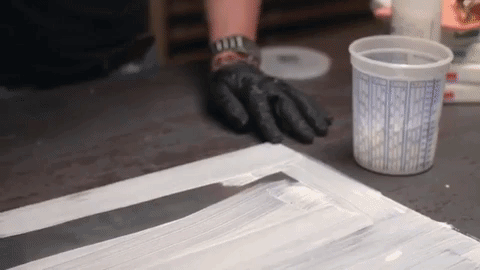
Patrick Guyton applies gold leafing to one of his custom boards
Once he decides on which metal to use, Guyton applies a time-sensitive glue onto a board. Next comes the delicate gilding process. The leafing is so fragile that Guyton doesn’t touch the metallic sheets with his hands. He instead uses wax paper to handle the leafing—static cling attracts the leaf to the paper—and Guyton carefully transfers the leafing onto the board.
“It is a frightening method,” Guyton says. “As soon as you touch it, it disintegrates, so it has to go right on.”
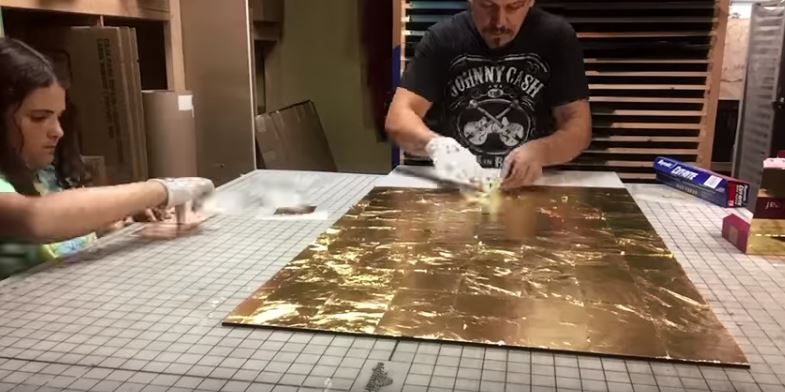
Patrick Guyton tiles one of his board with help from his daughter
It can take one full day to tile just one board. To prevent any accidents during the tiling process, Guyton has a special room in his studio dedicated to leafing that is completely sealed off from outside air currents.
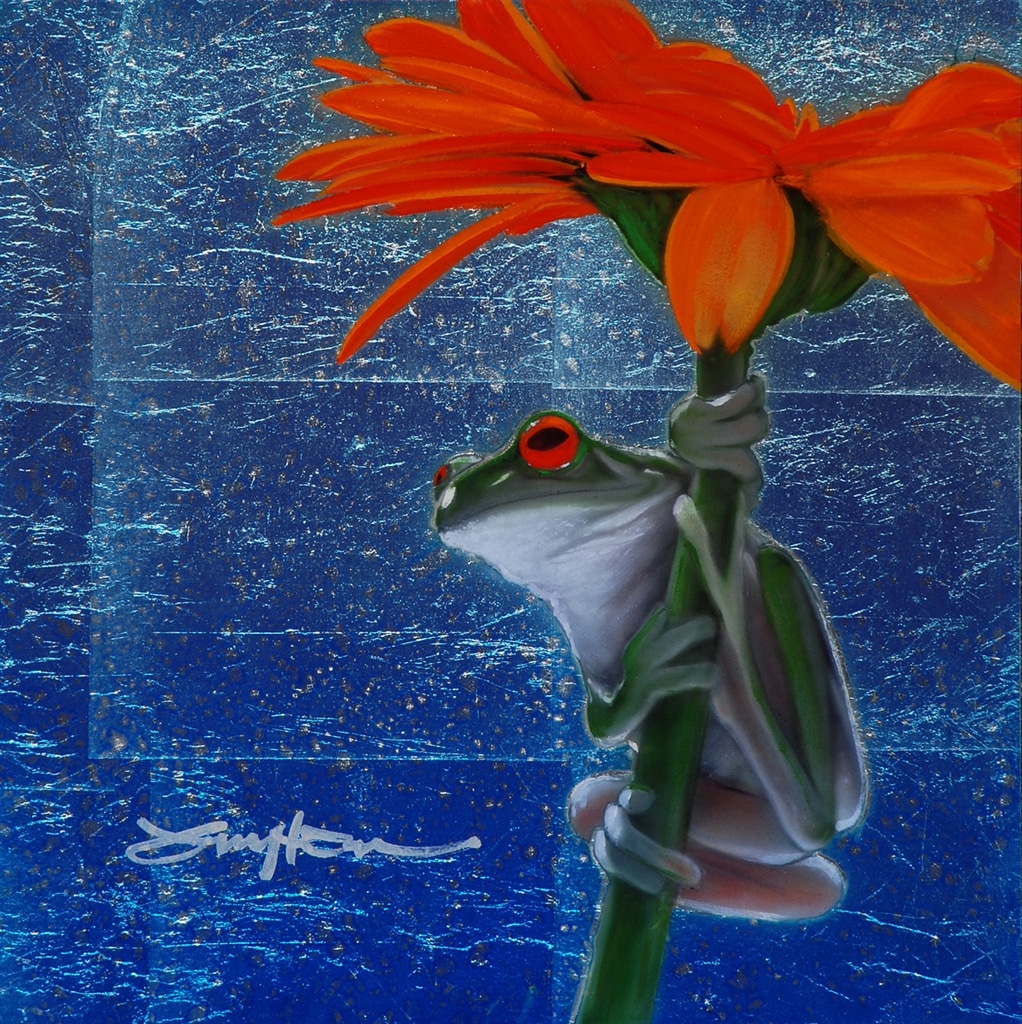
“Gimme Shelter” (2016), Patrick Guyton
Painting on Precious Metals
It’s hard to overstate the delicacy of Guyton’s gilded surfaces—even traditional paintbrushes can damage the metal sheets. To overcome this, Guyton uses special soft-haired brushes that he obtained during his previous career as a professional sign painter.
“I take my sign painting brushes—because that’s where I’m used to using a dedicated stroke—and I use those brushes in creating my work,” Guyton says.
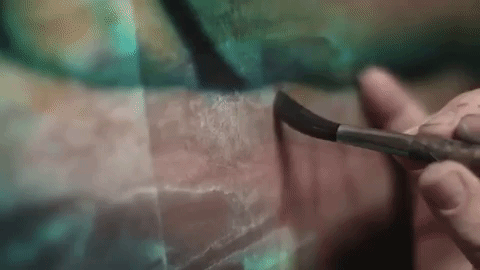
Patrick Guyton uses dedicated brushstrokes to paint on precious metals
With such a sensitive surface, you might wonder how Guyton can sketch out a rough draft of his compositions before painting. The answer is simple—he can’t.
Since sketching on the metallic surface would damage it, Guyton has to start each of his paintings with confidence, painting directly onto the metal without a sketch or outline to guide his hand. When all is said and done, a work of art can take one month’s time to finish.
Protecting the Art
You would think, given the delicate nature of the leafing process, that you would need to use the utmost caution while handling one of Guyton’s creations. Fortunately, Guyton has taken steps to ensure that his final products are surprisingly sturdy, lasting for years to come.
Guyton seals his works in a high-gloss urethane clear-coating, the same coating used to finish automobiles. This allows collectors to not only clean his artwork easily with a cloth, but they can also display them wherever they want.
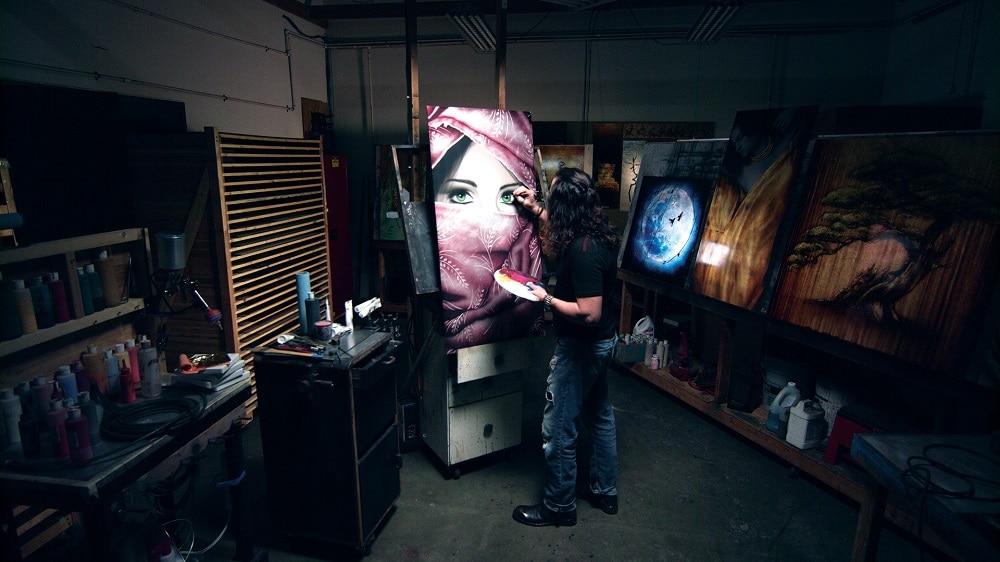
Guyton at work.
“I’ve had people that have bought them and put them outside,” Guyton says.
Collectors don’t need to worry about heat or cold affecting the art either. Since metal expands and contracts in different temperatures, Guyton needed a medium that could accommodate for the reactive nature of metal. His solution was a custom board made of aircraft aluminum and PVC, which safeguards each of his works of art.
“[The custom board has] been tried and true to this point, and a decade later I’ve had no issues with it,” Guyton says.
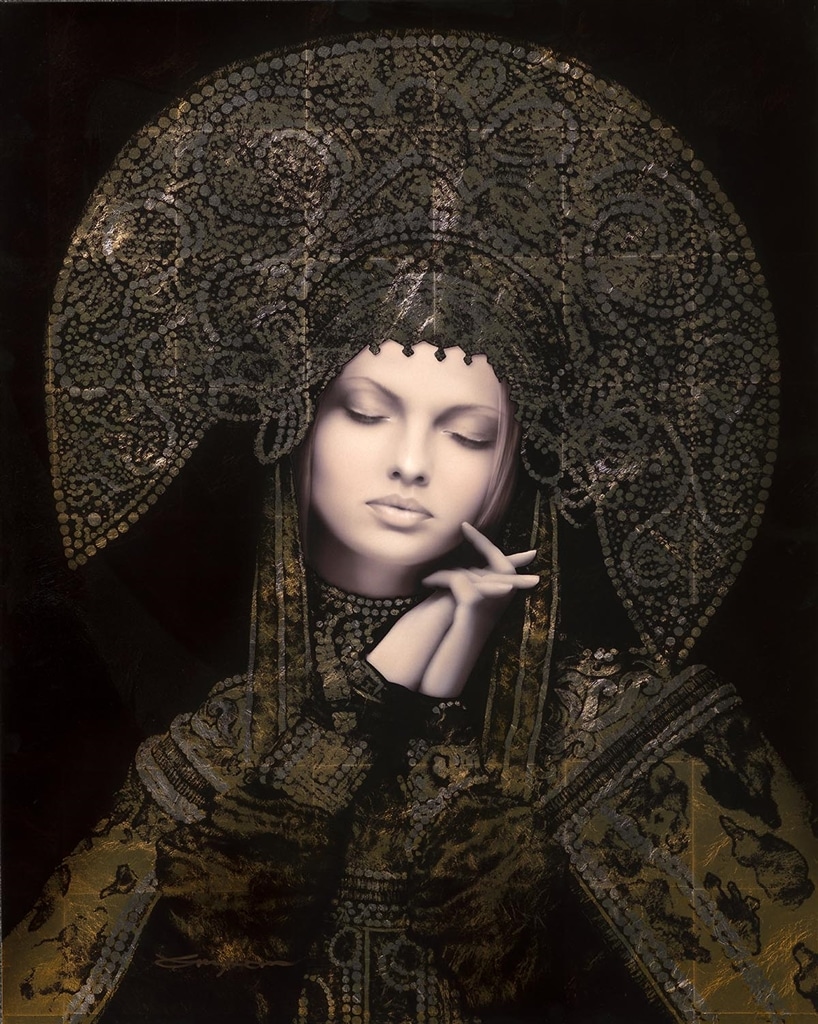
“Requiem” (2018), Patrick Guyton
As you can see, it takes a truly immense amount of work to create Guyton’s stunning gilded art. It may be a difficult process, but his end results are undeniably breathtaking.
If you’re interested in collecting the art of Patrick Guyton, attend one of our exciting online auctions or contact our gallery consultants at (800) 521-9654 ext. 4 or sales@parkwestgallery.com for information.
Follow Patrick Guyton and Park West Gallery on Instagram!





